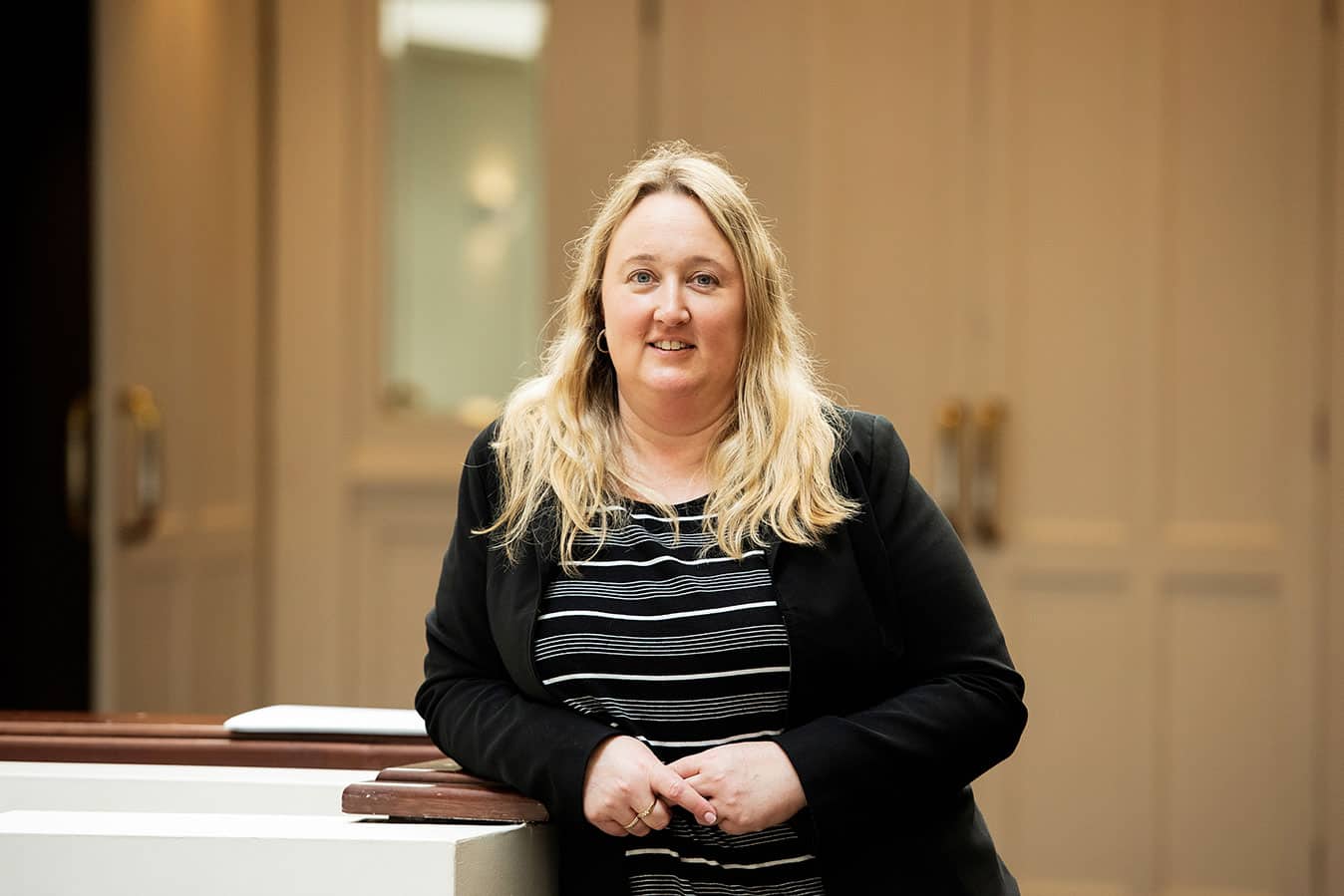This Saturday, 12 December, marks 20 years since the first nurse practitioners were endorsed in Australia.
The landmark moment serves as a constant reminder of how far the advanced practice nursing role has come and, importantly, what is still left to achieve.
Nurse practitioners have been well-established internationally but in Australia their introduction and acceptance has proved more challenging. In spite of this, there is now more than 2,000 nurse practitioners across the country working in many areas of specialty, each with a unique story of why they made the commitment to improve healthcare and outcomes.
“It’s been a long pathway and we’ve written our own story in that we’ve had to do a lot of work to justify our role in this country,” Australian College of Nurse Practitioners (ACNP) President Leanne Boase says.
“We’ve written our own story over the last 20 years, of really trying to build from a new role to having some access to Medicare and PBS and being able to practice in rural and remote areas and really deliver those services where they’re needed most. Yes, we do have some barriers still, but we have come a long way.”
Nurse Practitioner Week (December 7-13) presents an opportunity to highlight the contributions nurse practitioners make to the health system and patient care
Senior clinical nurses with advanced qualifications and extensive experience and expertise, nurse practitioners aim to improve access to treatment, provide cost-effective care, target at-risk populations and provide mentorship and clinical expertise to other health professionals.
The theme for Nurse Practitioner Week 2020, set by ACNP, is Nurse Practitioners: Writing Our Own Story – Helping You with Yours. It reflects how nurse practitioners have forged unique pathways in order to improve access to quality healthcare and how, while working in diverse areas across the health system, they are helping communities navigate their own health journeys.

“It’s fairly reasonable to say that in the past 20 years we’ve had to fight pretty hard to get our roles established and to gain acceptance,” Ms Boase reflects.
“Our patients accept us resoundingly and the community accepts us as well but some other health professions generally oppose us. It’s a long story, it’s a 20-year story and it’s a really unique one and we are also helping the community and our patients with their stories.
“Nurses spend a lot of time assessing their patients, talking to them and understanding what’s going on in their lives, so we’re really out there helping people to write their stories as well.”
Ms Boase’s own path traces back to the early 2000s when nurse practitioners were slowly emerging in Australia.
“I was in a rural area,” she recalls.
“I was the only registered nurse on overnight, with an acute ward and an emergency department to look after, and often had to call in local GPs for emergency prevention in the middle of the night. Naturally, I worked really well with those GPs, developed my practice and sought out extra learning and undertook a lot of extra qualifications. They really supported me to advance my practice and said: ‘We need your help. We need you to be able to support us more and take the lead in some of the presentations to emergency. We know you’ve got the capability and ability’.”
The backing from GPs spurred Ms Boase to undertake a Master of Nurse Practitioner course in 2003. Back then, the University of Newcastle was the only option as little was known about the advanced practice role.
Unfortunately, after completing the course, the Local Health Service stated they weren’t ready to implement such a role.
Ms Boase changed tack and relocated to Melbourne, found a new job and began the process of working her way up the ranks. She became endorsed as a nurse practitioner by the Nursing and Midwifery Board of Australia (NMBA) in 2009.
In Victoria, she worked in the emergency field, treating minor injuries and illnesses, and quickly developed an interest in paediatric conditions not well managed out in the community such as asthma, eczema and allergies.
Soon after, the federal government announced greater Medicare Benefits Schedule (MBS) and Pharmaceutical Benefits Scheme (PBS) access for patients seeing NPs. The step forward enabled Ms Boase to branch out into private practice, where she has ever since focused on addressing key community health concerns that are not well addressed and filling gaps in health services.
“I love it,” she says of the nurse practitioner role and the opportunities it brings to enhance patient care.
“I think it’s amazing. I’m always in touch with other health professionals and finding ways to help people. They’ll [patients] say ‘I’ve never had this kind of experience before. I get assessed, I can talk through all my problems and we’ll deal with them and you’ll educate me about everything’. It’s so rewarding.”
Reflecting on 20 years of nurse practitioners in Australia, Ms Boase suggests there’s been considerable growth along the way.
In the late 2000s, a wider range of courses became available, meaning more nurses had the opportunity to work towards becoming an NP. As mentioned earlier, in 2010 the federal government implemented greater MBS and PBS access for patients of nurse practitioners so that they could get rebates through Medicare. It was a game-changer.
“What that meant was nurse practitioners working in the public sector could now move out into private practice and actually take their services where they were needed most,” Ms Boase says.
While the landscape has improved significantly, the reality remains that nurse practitioners still face ongoing barriers that prevent them from working to full scope.
The Medicare Benefits Schedule (MBS) Review Taskforce was established to consider how thousands of items on the MBS, a list of health professional services such as consultation and diagnostic tests subsidised by the federal government, could be better aligned with contemporary clinical evidence and practice to improve health outcomes for patients.
As part of the MBS Review, the Nurse Practitioner Reference Group (NPRG) released a report outlining 14 recommendations on Medicare items relating to nurse practitioners. The recommendations aim to improve the accessibility and availability of quality healthcare for Australians, especially those living in aged care or rural and remote areas. They would allow NPs to work to their full scope, be better integrated into the health system, and ultimately, remove barriers that currently limit access to NP services.
The outcome of the MBS Review is yet to be determined but nurse practitioners are hopeful that meaningful change will occur.
“These recommendations will remove a lot of barriers for our patients and out-of-pocket costs that they currently pay,” Ms Boase says. “It will also remove a lot of cost to the health system because, currently, a lot of our patients have to go and see someone else so that that can save some money on their prescription or an x-ray.”
The limitations nurse practitioners work under were brought to the fore as the COVID-19 pandemic emerged earlier this year, Ms Boase explains.
Most nurse practitioners experienced increased workloads amid COVID-19 and, like all health professionals, had to change their practice and the way they see and treat patients. But because of longstanding barriers, Ms Boase believes NPs weren’t given the opportunity to contribute to the pandemic response as much as possible.
As an example, Ms Boase says during the early stages of COVID-19 nurse practitioners working in their own primary care clinics were not recognised as primary care providers and as a result struggled to access PPE when it was distributed through Primary Health Networks (PHNs).
Other issues reflected longstanding barriers that were exacerbated by the pandemic, such as the need to have collaborative arrangements and restrictions in the ability to order tests.
“The pandemic just really drove it home that these things need to be fixed as a matter of urgency,” Ms Boase says.
“It really brought to light that there should actually be a sense of urgency around it because when something like this happens [the pandemic] we don’t have the time to do the workarounds or refer to secondary or additional healthcare providers.”
As an unprecedented and challenging year draws to a close, Ms Boase says she hopes Nurse Practitioner Week celebrations give NPs the chance to pause and reflect on their own story.
“I really hope that each nurse practitioner takes some time this week to step back and really think about what they’ve achieved and what they are really offering to their patients and to the community, and just celebrates.
“Every single NP has worked really hard to get to where they are and they’ve worked hard with the best intentions to improve healthcare and help their patients.”








